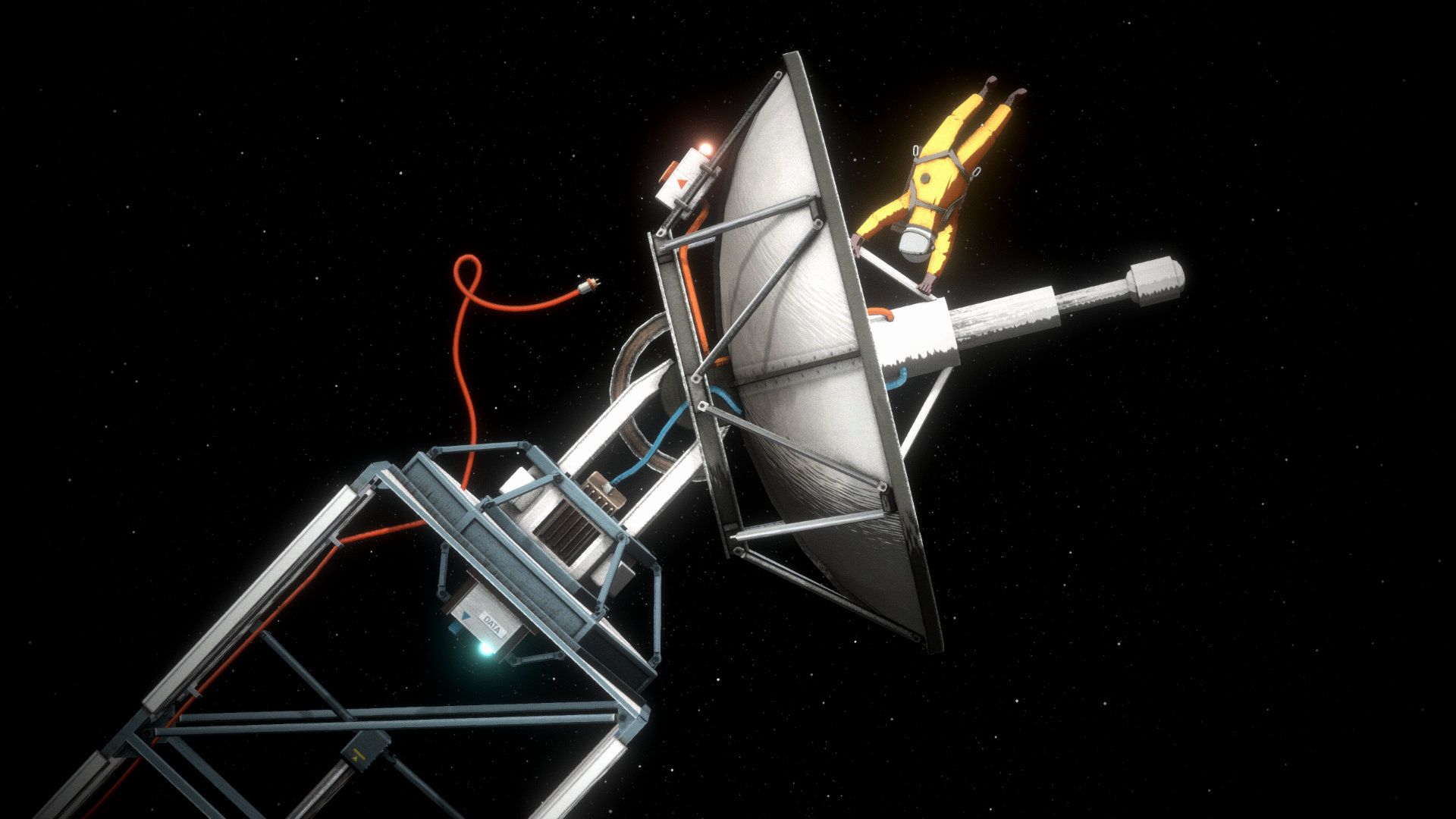Heavenly Bodies: QWOP meets Ikea in Zero Gravity
Astronauts, assemble!

It’s been almost 14 years since Bennet Foddy’s QWOP hit the internet, turning the simple act of running 100 meters into a near-impossible task and spawning a slew of similarly-fashioned oddities in its wake.
Call them qwop-likes, physics simulators, joke games, or anything really — what the likes of Surgeon Simulator, Job Simulator, Octodad, I Am Bread, Human Fall Flat, and PHOGS all have in common is: you pick a simple activity and you make it as literal as possible, leaving any game design abstraction at the door.
Using a pair of scissors seems simple? What if you had to think about what each finger is doing? Going to the supermarket or mowing the lawn hasn’t taken up any brain space for the best part of the last two decades? What if you had multiple brains like an octopus, and each one had control over a separate limb?
Historically, games tend to abstract the basic actions (walking, buying, picking up stuff) into simple inputs, and put the mechanical focus on what’s exciting: shooting, fighting, driving, the things we watch on TV but don’t do often. By not abstracting the mechanics of ordinary activities and giving them as much depth as the more thrilling actions, qwop-likes make any chore a blast to play.
In Heavenly Bodies, released late last year for Windows and PlayStation consoles, the ordinary activity is being an astronaut during the space race. I know, I know, we’ve come full circle.
But whereas a traditional game would skip past the… bodily layer and go straight to the ship’s controls — the driving, the shooting, and whatnot — Heavenly Bodies explores the nitty-gritty of a day in space. Answering radio calls, attaching tubes, driving screws, fixing antennas, and a lot, a whole lot of reading the instructions, are all part of the gameplay here.
I admit I haven’t ever been to space, but I expect it to be a scary, high-risk environment in which you have to know what you’re doing. Much like assembling a wardrobe. That's where a good manual comes in.
Heavenly Bodies perfectly complements the qwop-ness of being a repairman in zero gravity with the tried and true custom of following an instruction manual to figure something out. A dynamic that, for its part, has also been gaining some attention in the past years, with games like Keep Talking and Nobody Explodes, Operation Tango, Exapunks, and the super-smart, yet divisive Zelda-like Tunic coming most recently.
The end result is nothing short of great. Going in, I expected the focus to be on the humor, physics, and the difficulty of doing even simple things due to the lack of abstraction. That’s all there, but the Operations Manual was what surprised me the most.
The game is split into eight chapters, each one presenting a mission: erecting a giant antenna, unpacking and controlling an exoskeleton in order to mine asteroids, putting a greenhouse to work, etc. For each of them, you have to follow a set of increasingly complicated steps so that everything is assembled just right, all while fighting to stay within reach of your ship and not end up spinning in the void.
All necessary steps are illustrated in detailed, scientific-looking diagrams. But not knowing how the parts work beforehand turns every task into a process of exploration, discovery, and interpretation, as if you were an archeologist turning a set of unintelligible symbols into something you can make sense of. Which I know may sound boring, but is executed to perfection and ends up making for a hell of a puzzle.
Heavenly Bodies acknowledges that there’s a special kind of pleasure that stems from following instructions. Think LEGO, model kits, or even typing a code into a computer and making a box move — they’re fun activities even with a low level of challenge. For those who have lived through the 80s and 90s, there’s a whole culture of searching for essential information in a game’s manual, sometimes even in a foreign language, that is all but lost.
I understand this is a hard sell, as manuals have yet to regain their place as a deserving game mechanic outside the lens of nostalgia. But even though it makes only a timid appearance in the trailer for Heavenly Bodies and is completely left out of the game’s presskit, I feel like the Operations Manual is the subdued, monochromatic star of the show.
In my five or so hours with the game, I haven’t touched the local 2-player mode and haven’t cared for the hidden collectibles and extra challenges that increase the longevity of each level. Still, I can’t recommend Heavenly Bodies enough, even for its base experience alone.
Yes, I had my share of anger when trying to reach a wrench or lever a couple of inches away, waving my arms in the vacuum, watching as my safety cable got sucked out of a hatch — but I feel like the quiet, cerebral dynamic of looking at the manual, piecing ideas together and eventually having a eureka moment more than made up for it.
As I'm sure every experienced astronaut would tell you: come for the physics, stay for the logic.
